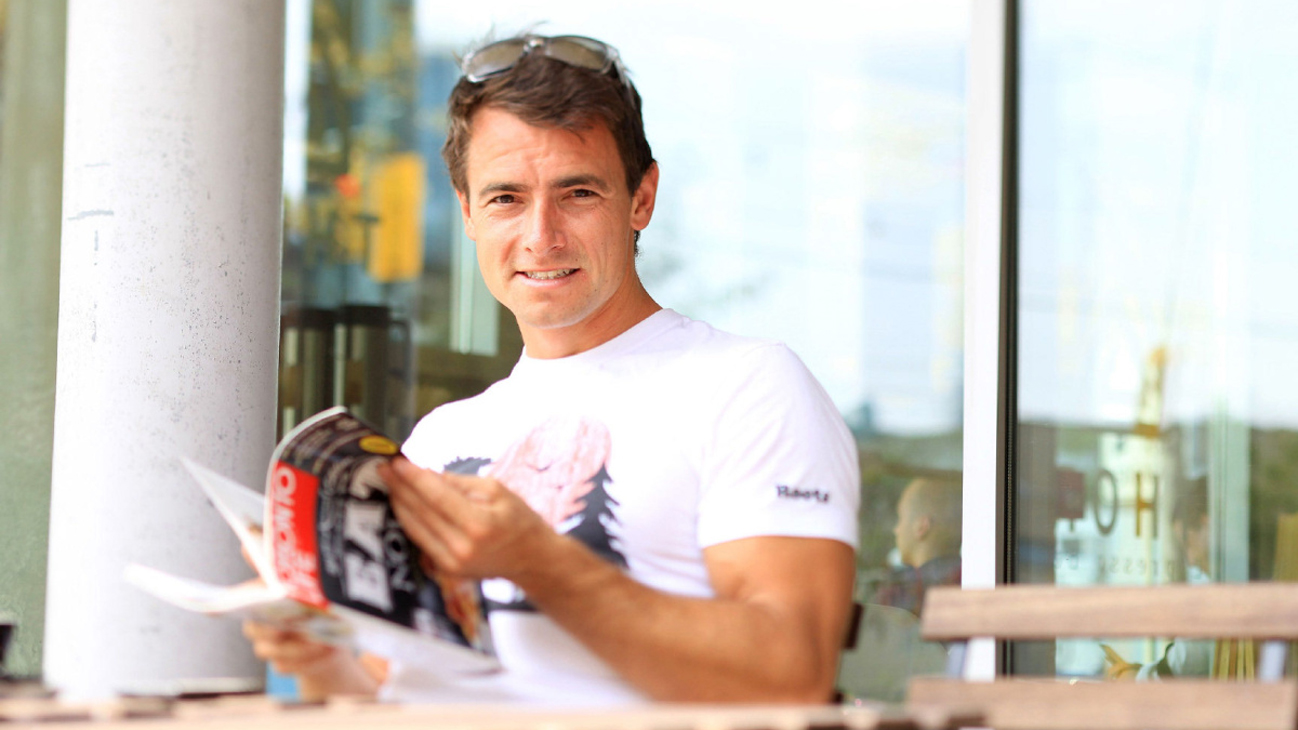Champion kayaker Adam van Koeverden first captured the world’s attention at the 2004 Olympic Games, where he was a double medalist with gold and bronze victories. Since then, he has continued to dominate the sport, taking silver at both the 2008 and 2012 Olympic Games, earning two World Championship titles in 2007 and 2011, and being named “Canada’s Athlete of the Year” in 2012. Read about his thought on having the 2015 Pan Am Games in Toronto:
Adam van Koeverden is excited that the 2015 Pan Am Games have come to Toronto — and not just because of the competition.
When Metro paid a visit to the star kayaker’s morning training session at the Burloak Canoe Club in Oakville, Ont., a little over a week before the Games’ official kickoff, the Toronto native said he’s already thinking about the Games’ enduring legacy.
As a two-time world champion four-time Olympic medallist (yes, there’s a gold in there), he knows from experience that major sporting events are bigger than sports. When China hosted the 2008 Olympics, where he won a silver medal in K-1 (single kayaker) 500-metre event, the hot topic was the country’s human-rights record. It was “a good thing” that the world talked about those issues because of the Games, he said.
The Greater Toronto Area might not have that kind of reputation to contend with, but, van Koeverden said, the Pan Am Games is an opportunity to improve infrastructure, city planning, traffic and transportation issues — and not just in Toronto proper, either.
“You can call these the Golden Horseshoe Games,” he said. “They benefit the entire region. It’s what made the original bid so attractive. When you get an Olympics or the Pan Am Games, all of the issues that were on the back burner get done.”
Citing the recent completion of an express rail line between Toronto’s Pearson Airport and downtown’s Union Station as a case in point, van Koeverden also mentioned the two most pressing transit issues in Toronto: Expansion of the city’s subway system and modernization of the elevated Gardiner Expressway.
“If we get the Olympics, guess what? I bet they’re done. That’s what it takes — something; a deadline.”
Van Koeverden has high hopes for his hometown.
Citing, with evident pride, the city’s multicultural composition, he said he would like his sports peers to get out of the athletes’ villages and experience the wider city.
“I think one of our greatest assets is our neighbourhoods,” he said. “When my Romanian friend visited I took him to Spadina for soba noodles.
“A Romanian, in Chinatown, for Japanese noodles. That’s Toronto.”
Build it and they will come
At 8 a.m. on a weekday in the summer, school’s out and Adam van Koeverden’s home canoe club is bustling with teenagers.
About a dozen of them with concerted faces paddle by in a war canoe — likely those who are striving to be champions. Others are likely just there to splash around because their parents want them to, but that’s great too, van Koeverden says.
Van Koeverden, who studied cultural and socio-economic barriers to sports as part of his kinesiology program at McMaster University in Hamilton, Ont., recognizes that in most places in Canada, due to a lack of funding and infrastructure, kids don’t have such easy access to sports equipment and facilities. That’s something he hopes will change, in part thanks to large-scale events like the Pan Am Games.
“It takes a community to create a community sports program,” he said. “It doesn’t take just one person. It takes a lot — and the upkeep, and the sustainability of it is really based on people and their hard work.”
But before you bring a group of people together to work towards a common goal, he said, you need a place for them to be: a facility. And that’s why investing in sports infrastructure matters, he said
His canoe club, formerly known as the Oakville Racing Club, was founded in 1974 by sprint paddler Bill Collins. It was established on an old sewage-treatment plant that the town no longer had any use for.
They’ve come a long way since then. The aquatics centres, gymnasiums, fields and bike parks built for the Pan Am Games are going to have a lasting impact on Toronto and the surrounding area, van Koeverden said, pointing to the Toronto Pan Am Sports Centre (TPASC) facility in Scarborough, which includes two Olympic-sized swimming pools, a running track and a diving program.
“As long as we install all the necessary infrastructure and resources post-Pan Am in that place, then I guarantee there’ll be an Olympic swimmer from Scarborough,” he said. “And if there’s one Olympic swimmer, it means that there are 3,000 kids who are swimming. And that’s the important thing.”
On Americans who might consider going into paddling:
“I would tell them to go for a sport that offers scholarships and a paycheque.”
On Pan Am’s marketing:
“There aren’t enough posters. Kinky Boots has more posters than the Pan Am Games.”
On how he started paddling:
“My mom was concerned I was going to find trouble after school. Canoe club was her solution.”

